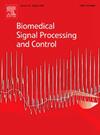基于多尺度一致性对抗学习的半监督医学图像分割方法
IF 4.9
2区 医学
Q1 ENGINEERING, BIOMEDICAL
引用次数: 0
摘要
医学图像分割是医学图像分析中的一项重要任务,对提高疾病诊断的准确性和治疗计划的效率起着至关重要的作用。尽管深度学习进行了大量的研究工作,并取得了显著的技术进步,但它的性能往往受到大量准确标记图像的必要性的限制,而这些图像的获取本身就成本高昂,而且需要大量的劳动力。为了缓解这一挑战,本研究提出了一种新的使用多尺度一致性对抗学习(MSCAL)的半监督分割方法。该方法利用少量带注释的图像,构建了一个综合的数据增强摄动空间,包括图像级强弱摄动和多尺度特征摄动。在此基础上,实现了跨不同尺度分割网络的强弱一致性正则化和多尺度对抗学习策略。此外,该方法利用自适应加权金字塔一致性损失来鼓励跨尺度的一致性预测,并通过判别器输出的置信度图来强调高置信度区域的一致性。最后,在ACDC和BraTS2019数据集上严格评估了我们提出的模型的优势,并与十种最先进的半监督方法进行了系统比较。实验结果表明,该模型在DSC、HD95、ASD指标和p值上均具有较好的优越性。值得注意的是,仅在3个注释样本的情况下,该方法对右心室、心肌和左心室的分割准确率分别至少提高了4.2%、2.2%和1.6%。消融研究进一步证实了这一创新框架能够获得更丰富的特征表示,并增强半监督医学图像分割任务的模型鲁棒性。本文章由计算机程序翻译,如有差异,请以英文原文为准。

Semi-supervised medical image segmentation method using multi-scale consistency adversarial learning
Medical image segmentation is an essential task in medical image analysis, playing a crucial role in improving the accuracy of disease diagnosis and the efficiency of treatment planning. Despite extensive research efforts and notable technological advancements of deep learning, its performance is often limited by the necessity for vast amounts of accurately labeled images, which are inherently costly and labor-intensive to procure. To mitigate this challenge, this study proposes a novel semi-supervised segmentation using Multi-Scale Consistency Adversarial Learning (MSCAL). By leveraging few annotated images, this method constructs a comprehensive data augmentation perturbation space, incorporating both image-level strong–weak perturbations alongside multi-scale feature perturbations. Furthermore, strong–weak consistency regularization and multi-scale adversarial learning strategies across diverse scales of the segmentation network are implemented. Furthermore, the method utilizes adaptive weighted pyramid consistency loss to encourage consistent predictions across scales, and emphasizes consistency in high-confidence regions through the confidence maps outputted by the discriminator. Finally, the advantages of our proposed model are rigorously evaluated on the ACDC and BraTS2019 datasets, where it is systematically compared against ten state-of-the-art semi-supervised methods. Experimental results demonstrate the model’s superiority across DSC, HD95, ASD metrics and -value. Notably, with only 3 annotated samples, this method achieves at least 4.2%, 2.2%, and 1.6% gains in segmentation accuracy for the right ventricle, myocardium, and left ventricle, respectively. Ablation studies further corroborate this innovative framework enables the acquisition of richer feature representations and bolstering model robustness for semi-supervised medical image segmentation tasks.
求助全文
通过发布文献求助,成功后即可免费获取论文全文。
去求助
来源期刊

Biomedical Signal Processing and Control
工程技术-工程:生物医学
CiteScore
9.80
自引率
13.70%
发文量
822
审稿时长
4 months
期刊介绍:
Biomedical Signal Processing and Control aims to provide a cross-disciplinary international forum for the interchange of information on research in the measurement and analysis of signals and images in clinical medicine and the biological sciences. Emphasis is placed on contributions dealing with the practical, applications-led research on the use of methods and devices in clinical diagnosis, patient monitoring and management.
Biomedical Signal Processing and Control reflects the main areas in which these methods are being used and developed at the interface of both engineering and clinical science. The scope of the journal is defined to include relevant review papers, technical notes, short communications and letters. Tutorial papers and special issues will also be published.
 求助内容:
求助内容: 应助结果提醒方式:
应助结果提醒方式:


